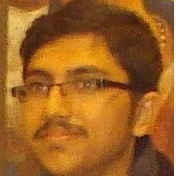
Suranjan Ganguly
Work place: Department of Computer Science and Engineering, Jadavpur University, Kolkata- 700032, India
E-mail: suranjanganguly@gmail.com
Website:
Research Interests: Image Processing, Image Manipulation, Image Compression, Pattern Recognition
Biography
SURANJAN GANGULY received the M.Tech (Computer Technology) degree from Jadavpur University, India, in 2014. He completed B-Tech (Information Technology) in 2011. His research interest includes image processing, pattern recognition. He was a project fellow of UGC, Govt. of India, sponsored major research project at Jadavpur University. Currently, he is a project fellow of DietY (Govt. of India, MCIT) funded research project at Jadavpur University.
Author Articles
Depth based Occlusion Detection and Localization from 3D Face Image
By Suranjan Ganguly Debotosh Bhattacharjee Mita Nasipuri
DOI: https://doi.org/10.5815/ijigsp.2015.05.03, Pub. Date: 8 Apr. 2015
In this paper, authors have proposed two novel techniques for occlusion detection and then localization of the occluded section from a given 3D face image if occlusion is present. For both of these methods, at first, the 2.5D or range face images are created from input 3D face images. Then for detecting the occluded faces, two approaches have been followed, namely: block based and threshold based. These two methods have been investigated individually on Bosphorus database for localization of occluded portion. Bosphorus database consists of different types of occlusions, which have been considered during our research work. If 2D and 3D images are compared then 3D images provide more reliable, accurate, valid information within digitized data. In case of 2D images each point, named as pixel, is represented by a single value. One byte for gray scale and three byte for color images in a 2D grid whereas in case of 3D, there is no concept of 2D grid. Each point is represented by three values, namely X, Y and Z. The 'Z' value in X-Y plane does not contain the reflected light energy like 2D images. The facial surface's depth data is included in Z's point set. The threshold or cutoff based technique can detect the occluded faces with the accuracy 91.79% and second approach i.e. block based approach can successfully detect the same with the success rate of 99.71%. The accuracy of the proposed occlusion detection scheme has been measured as a qualitative parameter based on subjective fidelity criteria.
[...] Read more.Other Articles
Subscribe to receive issue release notifications and newsletters from MECS Press journals